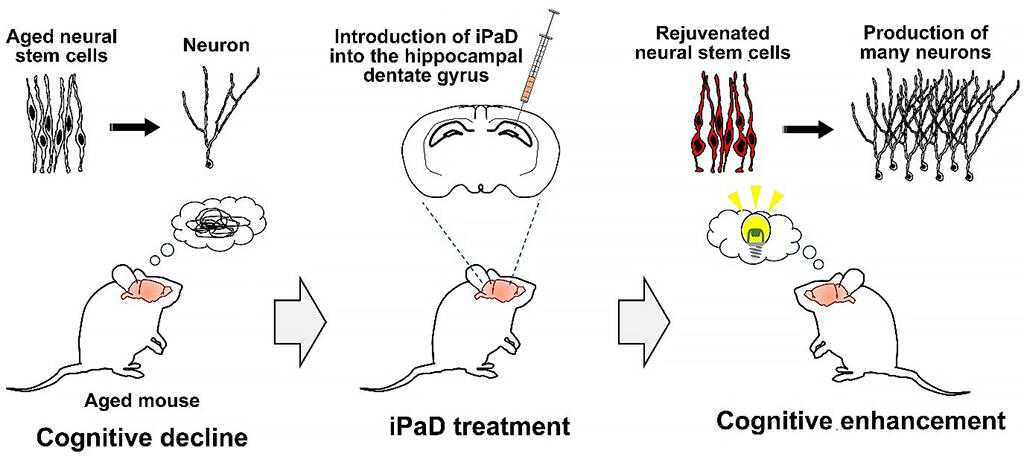The activity of neural stem cells in the brain decreases with age, and new nerve cells are not generated in old age. A research group led by Takashi Kaise and visiting professor Ryoichiro Kageyama, both from the Institute for Frontier Life and Medical Sciences, Kyoto University, discovered that aging neural stem cells can be rejuvenated by forced expression of Plagl2 and suppression of Dyrk1a. In fact, when gene expression was induced in the hippocampal dentate gyrus of mice, neurogenesis occurred even in aged mice in which neural stem cells were almost non-functional, resulting in the restoration of spatial grasp and memory ability. Visiting Professor Kageyama said, "I moved to RIKEN in April and am currently studying the recovery of brain function using common marmosets of primates. In collaboration with Eisai, I am proceeding with the simultaneous analysis of the effects and mechanisms. I would like to continue the study for about a year and then progress to the development of treatment methods and drugs." These findings were published in Genes & Development.

Aged neural stem cells produce only very few neurons, leading to cognitive decline. However, iPaD treatment can rejuvenate aged neural stem cells, which produce many neurons, leading to cognitive enhancement.
provided by Takashi Kaise
Among the 80 types of transcription factors that are highly expressed in embryonic neural stem cells, the research group forcibly expressed transcription factors that showed high activation ability in a culture system of quiescent neural stem cells and, subsequently, investigated their in vivo activation ability. The zinc-finger protein Plagl2 was found to have the most potent activating effect. Next, they similarly examined factors that exhibited high activation capacity using a knockdown approach and found that knockdown of the Down syndrome-related kinase Dyrk1a most efficiently activated the proliferative and neuronal production abilities of senescent neural stem cells.
"We found that this combination enhanced neurogenesis the most; thus, we named it iPaD (inducing Plagl2 and anti-Dyrk1a)", said Dr. Kageyama. Indeed, the introduction of lentivirus-integrated iPaD into the hippocampal dentate gyrus of aged mice (age 18-24 months, equivalent to 56-69 years in humans), showed that senescent neural stem cells, which had almost completely lost their ability to proliferate and produce neurons, were restored to a state similar to that of neurons in a juvenile mouse. In addition, proliferation continued for at least 3 months, and a large number of neurons were newly produced. Furthermore, treatment of aged mice with iPaD improved results in the Barnes Maze test, which examines spatial memory, and the novel object search test, which examines cognitive memory.
"iPaD has been shown to rejuvenate senescent neural stem cells, produce neurons, and improve learning and memory capacity by altering chromatin structure. In the future, we would like to connect these findings to the development of neuronal replacement therapy for dementia, which could potentially act by rejuvenating endogenous neural stem cells. RIKEN has a lot of common marmosets in old age, so I would like to use these animals to study the effects of this sort of treatment," said Dr. Kageyama.
This article has been translated by JST with permission from The Science News Ltd.(https://sci-news.co.jp/). Unauthorized reproduction of the article and photographs is prohibited.




